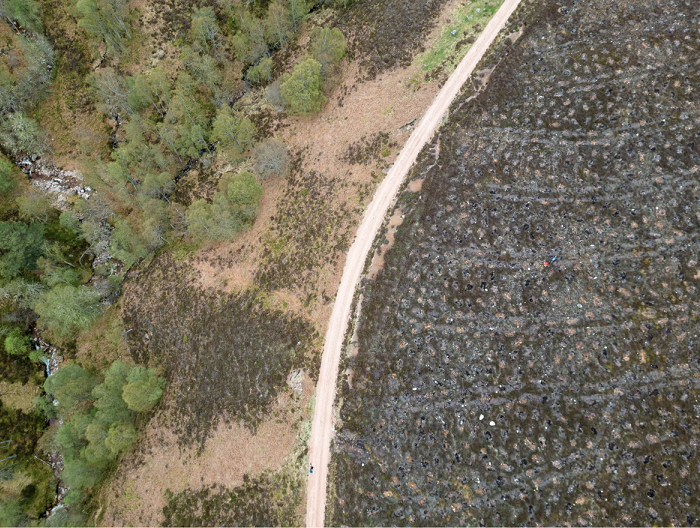
When James Watt, sometime chief executive of the beer company BrewDog, speaks about tree planting in the Highlands, he reminds me of unpleasant landowners of the past. In his latest attempt at defending BrewDog’s disastrous planting efforts on their Kinrara estate near Aviemore in the Cairngorms National Park, Watt did not mince his words when speaking to the Sunday Times: “If you’re looking through a reputational lens, we’d have been better if we’d taken that £20million and spent it on hookers and coke in Vegas” (see here) .
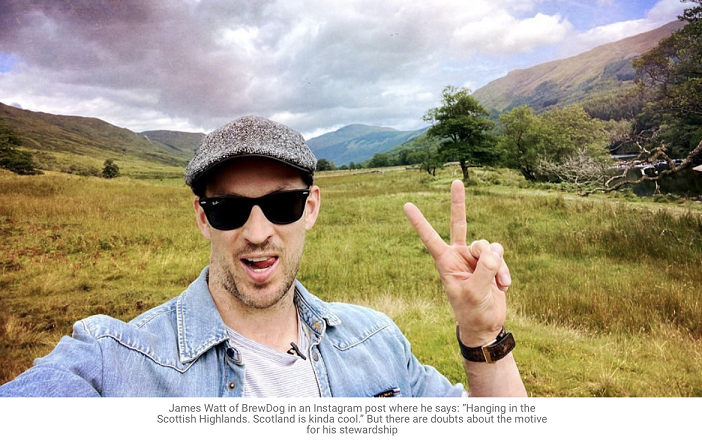
During the 1970s and 80s, as the area scientific officer for the Nature Conservancy Council (NCC), based in Aviemore, my colleagues and I dealt with some unpleasant people in the Cairngorms. There was Lord Dulverton, owner of Glenfeshie estate, who repeatedly broke bird protection legislation and, when called to account, simply solved the problem by inviting the NCC chairman to dinner in the House of Lords. Over on Deeside John Kluge, once the richest man in America, bought Mar Lodge Estate in 1989, reputedly to please his wife, a strip tease artist who wanted to be close to Balmoral so she could “rub shoulders” with the Queen. Before that the estate was owned by Gerald Panchaud, a Swiss banker, who told my colleague, as he was trying to renegotiate our nature reserve agreement with him, that the public money on offer to him was a paltry sum. “It would cost me more to hire a woman for the night in London than to accept government money to manage my estate in the Cairngorms” was his curt response.
Those characters from the past, who left some appalling scars on our mountains, are no longer with us. Nowadays the ancient Caledonian pinewoods are creeping back up the hillsides. Stopping overgrazing by culling excessive numbers of red deer is the key, as demonstrated in the natural regeneration of Glenfeshie, under the ownership of the Danish citizen, Anders Povlsen, and on Mar Lodge Estate, now owned by the National Trust for Scotland. Quite why James Watt of BrewDog failed to learn from these nearby landowners might seem to be a mystery, until we understand the role of the Scottish Forestry grant system.
Less important than the temptations of Las Vegas, was the money available from this grant system, providing BrewDog agreed to create its Lost Forest by erecting miles of new deer fencing, churning up the peaty ground with diggers and planting nursery grown trees. Both BrewDog and Scottish Forestry ignored repeated advice that this was entirely the wrong strategy for Kinrara estate whose northern border meets the ancient Caledonian Forest, astride the River Dulnain above Carrbridge.
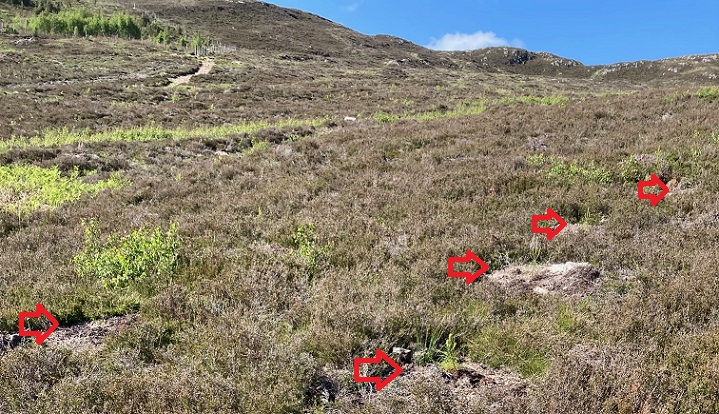
The opportunity to simply reduce red deer numbers and encourage the natural regeneration of this woodland up to the altitudinal tree line was squandered. Instead, we have huge blocks of planted woodland, an ecological insult in such an area, combined with endless lines of deer fencing, impacting a vast tract of wild landscape of outstanding recreational value, including slopes which used to provide some of the best ski touring opportunities in Scotland.
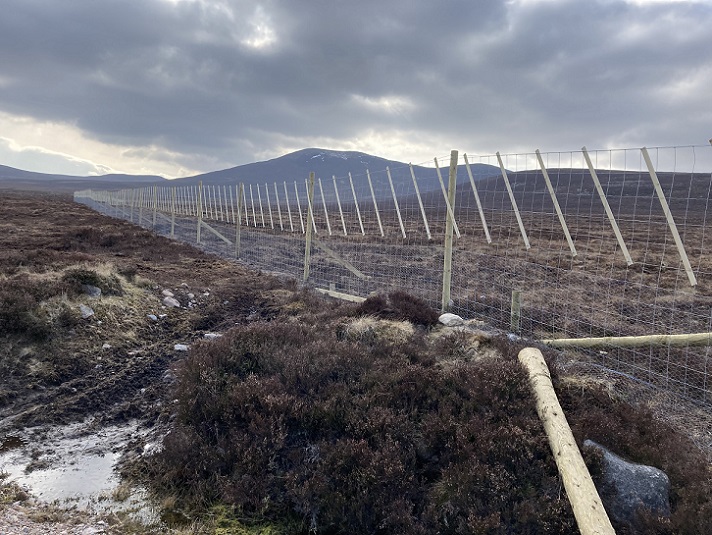
BrewDog are due to receive in excess of £1.2 million of public money for damaging the national park in this way. Two years ago I told the Scottish Government’s then forestry minister, Mairi McAllan MSP, that the Scottish Government was wasting £millions of public money through the forestry grant scheme, giving BrewDog’s Kinrara estate as the latest example. Nothing has changed.
Landowners like BrewDog continue to erect miles of unnecessary deer fencing, churning up peaty soils to plant trees on the mounds created, only for those trees to die in dry weather. Meanwhile all the naturally regenerating trees and other vegetation, provided free of charge by nature, are ignored.
During the last three years over £6 million of public money has been given to a total of just three estates for tree planting schemes within the Badenoch and Strathspey section of the Cairngorms National Park. Natural regeneration of the existing vegetation would have been a far better option, capturing carbon and restoring biodiversity from day one, with more deer stalkers employed, no deer fences erected and minimum costs to the public purse. This £6 million covers Scottish Forestry grant given to Muckrach Estate near Grantown on Spey, BrewDog’s Kinrara Estate by Aviemore and to the Standard Life Investments Property Income Trust who bought land to the east of Kingussie and Newtonmore and renamed it the Far Ralia Estate. Standard Life, who have now been bought over by the abrdn investment company, boasted at the time of purchase how this was assisted by the opportunities offered by forestry grants.
All three estates have been disturbing peaty soils with digging machines used to create mounds on which the trees are planted. Planted trees have far less chance of survival during dry summers when compared to naturally regenerated trees with their extensive rootstocks. Hundreds of trees have died on Kinrara estate within a year of planting.
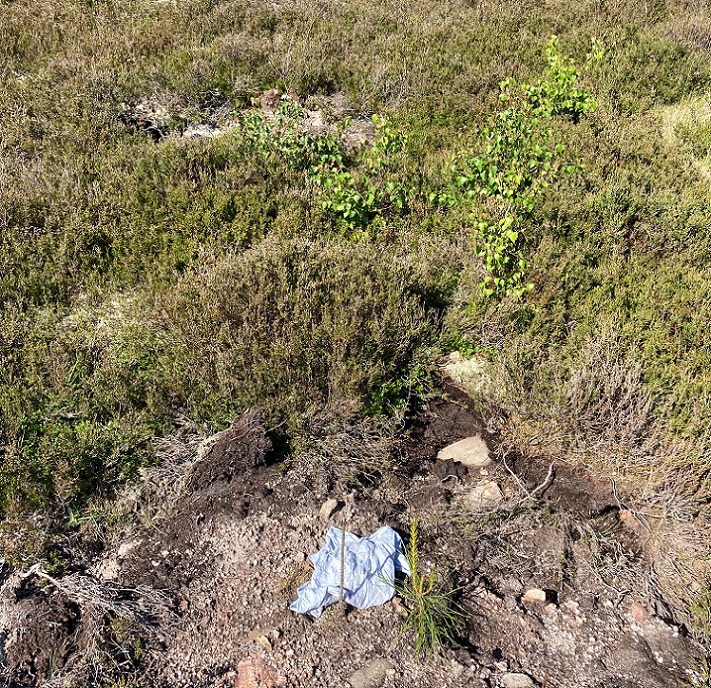
This mounding is permitted by Scottish Forestry even though the exposed peat is expected to dry out and emit carbon into the atmosphere for many years to come, whereas a naturally regenerated tree, established through seed dispersal, needs no soil cultivation, artificial fertiliser or the carbon cost of growing in a nursery and transportation to planting site.

On abrdn’s Far Ralia estate their unwise tree planting has also been accompanied by excessive damage to an ancient military road, constructed by General Wade in the early 1700s. Dreadful new hill road construction has also taken place on the Muckrach Estate. The business owners of this estate who are based in Birmingham, England, are creating a scarred landscape reminiscent of scenes from the front line in Ukraine. All of this is going on in the Cairngorms National Park, supposedly one of the UK’s finest areas for wildlife, landscape, recreational value and community engagement.
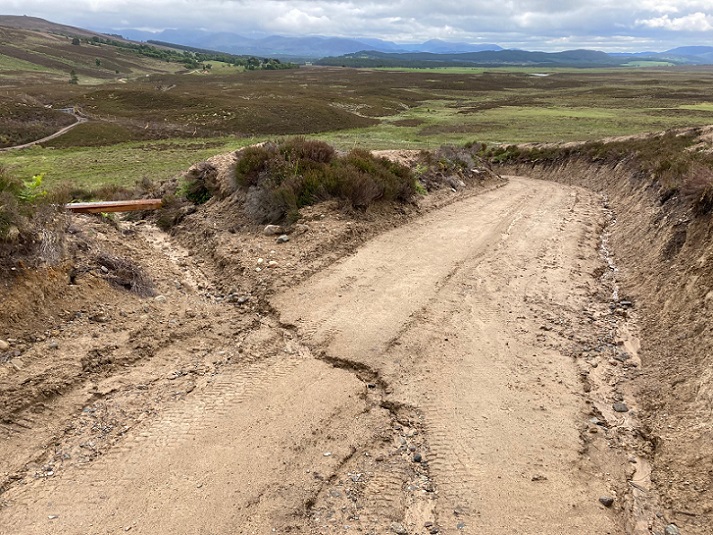
At the recent Scottish Land Commission conference in Aviemore I was told that the chief executive of one of Scotland’s main forestry companies was now saying that they had no need for forestry grant. The steady rise in Scottish land value, when traded on the world property markets, without any restrictions to protect national and local community interests, provide sufficient reward to private individuals, corporate bodies and investors. Forestry grants are no longer necessary for anyone contemplating the purchase of a few thousand hectares of upland Scotland.
My conclusion from this conference is that the time for action by the Scottish Government, at First Minister level, is long overdue. In a recent discussion in Dundee, at an event hosted by the Courier newspaper, John Swinney emphasised his determination to ensure that Scotland got value for money in all aspects of government expenditure. He could start this process by ordering a complete freeze on all forestry grants until such time as the system has been radically reformed. We need to stop funding crazy planting schemes in the uplands and divert the grant aid to farmers in the lowlands – that is where our trees need to be planted, on mineral, not peaty soils, to deliver carbon capture, biodiversity recovery, timber for construction and recreational opportunity, all at best value for the public purse.
Meanwhile we also need to deal with BrewDog and their fellow investors in our wild places. It is fortunate that the Scottish Parliament has provided us with the essential power. Part 5 of the Land Reform (Scotland) Act 2016 is the key. This gives compulsory purchase powers to local community groups to acquire land for the purposes of sustainable development. A community development trust centred on Aviemore could use these powers to bring the whole of BrewDog’s Kinrara estate into community ownership. Surely James Watt would be happy with this outcome to his Cairngorms adventure? With the profit made from a Kinrara sale he could finance a trip to Las Vegas.

The Panchaud’s were good owners of Mar Lodge. They tried to start a ski resort, allowed you to camp at Linn of Dee and had a lovely public bar round the back of Mar Lodge. The National Trust have ruined it, shot all the deer and closed the public bar.
That would be the insane ski slope idea on the hill behind the lodge? They trashed an entire wood for the hairbrained scheme that was never even built. Aye they were great, very responsible owners, not. I did like the bar though, especially the aroma of burning pine from the fire.
The ski resort was doomed to failure, the bar closed many years before the NTS took over the estate and the deer population was ludicrously high, preventing any natural regeneration. And there was no camping at the Linn o Dee: the camping was at the Old Canadian Campsite where the Lui joins the Dee. You can still camp there responsibly if you like.
Re Muckrach
I have just recently received the Scottish Forestry site report.
There are many non-compliant and infringement issues with what was agreed at Planning Stage on this Woodland Creation.
The hill track you refer to has now to be reprofiled to allow rapid regeneration of native flora.
There is a long list of remedial work to be carried out.
Removing trees from the mounded black grouse lekking site and turning over the mounds to a natural state.
Removing planted trees from the natural regeneration areas.
Plus an awful lot more.
It makes interesting reading!
Very interesting, last week I was told there had been a site visit – soon after my first post on Muckrach – but it was withheld as was material in the course of completion! The remedial action is very interesting.
Nick if you look on the :
Wildlife-Rewilding-Dewilding facebook page you will find the report there
I wonder how many of the urban chatterati realise that “rewilding” means miles and miles of high fencing all over the Highlands? So much for outdoor access, there are occasional massive heavy gravity gates but they can so easily be locked, and they will be, the excuse will be “our rewilding has been so successful it has attracted rare species which must be protected from human disturbance”.
By they way, does the ban on new stiles in favour of DDA compliant gates apply in Scotland? If so surely these gravity gates don’t comply.
Dave Morris’s conclusions in his excellent summary article above are all absolutely correct. The First Minister should make a tour of the examples he cites – spanning the range from good practice to shockingly bad – and initiate appropriate agency action as a matter of urgency.